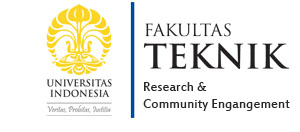| Authors | Djoko M. Hartono, Gabriel Andari Kristanto, Syaiful Amin |
|---|---|
| Publication Name | International Journal of Technology |
| Abstract | Trading activities, whether in traditional or modern markets, generate both solid waste and |
| Publisher | IJTech |
| ISSN | 2086-9614 |
| Page | 838-846 |
| Volume | 5 |
| Impact Factor (JCR) | --- |
| SJR | --- |
| Ranking Quartile | Q4 |
| Website | http://www.ijtech.eng.ui.ac.id/index.php/journal/article/view/2016 |
POTENTIAL REDUCTION OF SOLID WASTE GENERATED FROM TRADITIONAL AND MODERN MARKETS
LATEST POST
CALL FOR PROPOSAL: Penerimaan Hibah Seed Funding Publikasi FTUI 2025
CALL FOR PROPOSAL: Penerimaan Hibah Osaka Gas Tahun 2025
6 Dosen Fakultas Teknik Universitas Indonesia Catatkan 8 Paten
Mahasiswa FTUI Kaji Potensi Hidrogen Alami di Sulawesi, Didorong Jadi Rujukan Kebijakan Nasional
Mahasiswa FTUI teliti potensi hidrogen geologis pertama di Indonesia
POPULAR NEWS
LATEST VIDEOS
LOGIN






